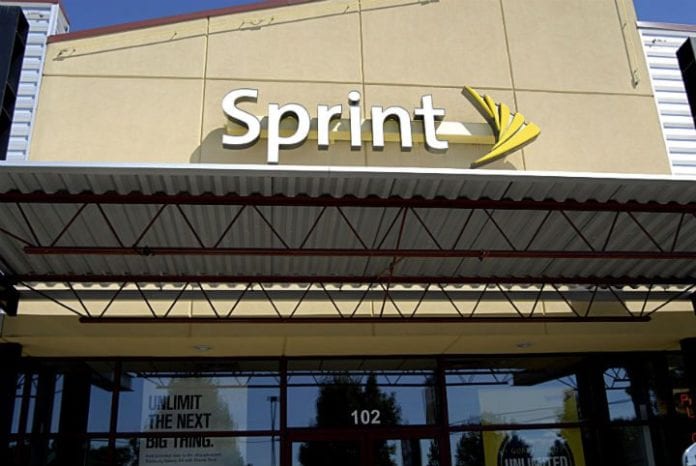One-time charge linked to value of Sprint brand
Sprint earlier this year trumpeted strong customer growth during the final three months of 2014, which included nearly 1 million direct customer net additions that was nearly double what it managed the previous year. However, we have now learned that the reported growth came at a price, as revenue dipped and expenses surged due to a one-time charge.
For its third fiscal quarter ending Dec. 31, 2014, Sprint reported $8.433 billion in wireless revenue, compared with $8.483 billion posted the previous year. Revenue was impacted by a steep drop in postpaid average revenue per user, which plunged from $63.44 in 2013 to $58.63 last year. That drop more than offset a slight increase in prepaid ARPU, which climbed 27 cents to $27.61.
That ARPU was also spread across a smaller direct postpaid customer base that stood at 29.9 million at the end of 2014, compared with a postpaid customer base of 30.8 million customers at the end of 2013. Sprint’s direct prepaid customer base was also smaller year-over-year, dropping from 16.2 million at the end of 2013, to 15.5 million at the end of 2014. That drop in direct prepaid customers also lost Sprint the unofficial title as the nation’s largest prepaid provider to T-Mobile US.
Sprint ended 2014 with 55.9 million total connections on its network, which was an increase from the 55.4 million at the end of 2013, and just enough to hold off T-Mobile US as the nation’s No. 3 operator.
As previously reported, Sprint said during the final three months of last year its branded offering attracted 30,000 net postpaid customers, 410,000 net prepaid subscribers and 527,000 net wholesale additions. The carrier noted that the postpaid growth was due to its highest gross additions in three years and that the percentage of “prime” customers was its highest ever.
The increase in gross additions offset increased customer churn, which on the postpaid side jumped from 2.15% to 2.33%, and on the prepaid side increased from 3.22% to 3.97%. T-Mobile US reported that it had a 2.2 to 1 positive porting ratio with Sprint during the final quarter of 2014, a trend it said continued into the first part of this year.
Sprint’s reported growth was a strong turnaround from the previous quarter in which Sprint lost 336,000 postpaid and 20,000 prepaid customers, numbers that were somewhat offset by gaining 840,000 connections via its wholesale and affiliate channels. Year-over-year, Sprint doubled the 477,000 net customer additions it posted for the final three months of 2013, which were mostly on the back of its direct prepaid operations as well as continued growth from affiliates and wholesale partners.
Sprint’s quarterly expenses actually improved year-over-year, but were hit on the bottom line tied to a $1.9 billion charge related to a readjustment of the value of the Sprint brand. That charge sunk wireless operating losses from $597 million during the final three months of 2013, to more than $2.2 billion last year. Earnings before interest, taxes, depreciation and amortization was not impacted by the charge and dropped just slightly to $1.034 billion, with an EBITDA margin of 15.4%.
Sprint has been looking at ways to take more costs out of its operations, announcing late last year plans to cut 2,000 jobs in an attempt to find what it called a balance between its workforce and operations. Sprint CEO Marcelo Claure said the move would save the carrier $400 million in labor costs on an annualized basis. The carrier reiterated its $1.5 billion cost-cutting target.
Outside of its financial performance, Sprint reported that its LTE network had surpassed 270 million potential customers covered, including its 2.5 GHz-based Spark network hitting 125 million pops covered. Sprint also said its 800 MHz-based voice coverage expansion is now available across its network.
Investors appeared supportive of Sprint’s direction, sending the carrier’s stock price (S) up more than 3.5% in early Thursday trading.
Bored? Why not follow me on Twitter i>

